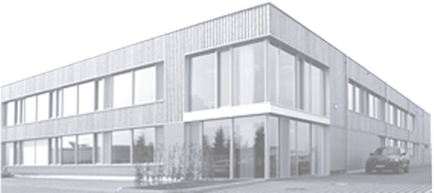Noise Reduction System
For quieter coexistence on the street
Oops - that was loud! When we're behind the wheel ourselves, we usually don't notice how loud we actually are on the road. And of course, a good sound is also part of motorsport - but only there. In road traffic and especially near residential areas, but also in nature, loud driving, whether intentional or unintentional, is disturbing and even forbidden
Please note that data (e.g. your IP address) is transmitted to YouTube's web servers to play the video! In addition, Google Fonts are downloaded to display the video player. You can find more information about this in our privacy policy
Noise displays visualize what others hear
When engine noise exceeds the pre-set decibel threshold, short, easy-to-read messages appear on the LED display: from „Quiet please” to a sad smiley ☹, a lot is possible.
The via traffic viaNRS noise display prototype is currently being tested on two popular sports car and motorcycle routes in the Sauerland region in Germany.
This is how the via traffic noise display works:
The sensor measures the sound level pressure of the vehicles approaching the display and sends a signal to the full-matrix LED display when an adjustable decibel value is exceeded. The LED display 50 -100 m away shows the vehicle driver a freely programmable symbol or text to encourage him to reduce speed / revs.
What are the advantages of a noise display?
Feedback works better than punishment: A noise display points out driving that is too loud in a neutral, friendly way and can thus have a positive effect on driving behavior. Noise emissions are reduced - and safety on the road is increased at the same time. In the best case, a noise display leads to mutual understanding.
- Less noise emission
- More safety
- More consideration
Is the noise display designed exclusively for motorcycles?
Not at all! What is measured is driving too loudly, and the vehicle is irrelevant. Sports cars, trucks, motorcycles, old scooters, "normal" cars... they can all represent an enormous noise pollution depending on the driving style and technical status. The noise display is intended to draw attention to this. Stigmatization was never a good solution.
Where does it make sense to set up a noise display?
In short: Anywhere where the need for quiet prevails. On popular excursion routes or in the immediate vicinity of residential areas.
Especially where beautiful landscapes and the longing for peace and quiet meet busy roads and traffic noise, the viaNRS noise display is a simple and effective solution to sustainably minimize the potential for conflict between affected residents and road users.
What messages can be played on the display?
The feedback can be customized: Short text messages such as "Quiet please" or "Too loud!" are just as possible as the LED motifs "sad smiley" ☹ or "thumbs down".
Can the noise display from via traffic also play out positive feedback?
Yes, this is possible. As soon as the predefined dBA value is undercut, the display shows positive feedback. Similar to a speed display panel, a "smiling smiley", a "thank you" or another freely selectable message is shown in words or pictures.
Where does the noise display get its power from?
By default, the power supply is provided by a 12 V rechargeable battery. If desired, the power supply can be extended by a solar panel, which makes long-term operation possible.
Does the noise display have to be placed at a fixed location?
Mobility is the absolute advantage of the NRS noise display: It can be set up and dismantled very quickly. Especially on popular excursion routes, it can be installed at short notice where noise complaints accumulate. Similar to speed displays, you avoid[LG1] getting used to the system by regularly changing the location.
What happens to the via traffic noise display in autumn and winter?
The noise display from viatraffic can be used all year round. If a municipality nevertheless decides to move the display or to "mothball" it during the cool season, this is possible without any problems. The NRS noise display can be dismantled in no time and set up at another location just as quickly.
summarized: This is the viaNRS noise display from via traffic.
The viaNRS alerts drivers to their often unconsciously caused noise pollution. Thanks to the system's visual feedback, they can immediately adjust their driving behavior. This ensures a general reduction in noise levels.
The system detects above-average noise levels in cars, trucks and two-wheeled vehicles such as motorcycles and scooters.
A sensor measures the sound level pressure of the vehicles approaching the system. If the sound exceeds a predefined decibel value, a signal is sent to the LED display 50 - 100m away.
Visual feedback appears on the display in the form of a short text or a symbol.




